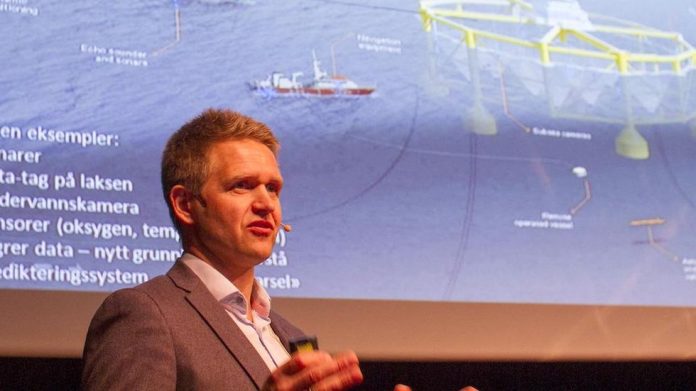Salmon farmer attributes strong performance to volume growth and reduced costs resulting from operational improvements.
In a financial report posted Thursday, SalMar posted a Q4 2018 operational EBIT of EUR 95.9 million, up from EUR 72.5 million from Q4 2017.
“This helped make 2018 a record year for SalMar,” the company said, with operating revenues in excess of EUR 1.1 billion and an operational EBIT of almost EUR 360 million.
Ocean Farm 1
“A good operational performance from all our business segments, strong demand and our highest ever harvested volume have all contributed to another satisfactory quarter for SalMar. The first generation from Ocean Farm 1 was also harvested during the quarter. The project’s biological results have been good and strengthened our confidence in fish farming further out to sea. Our operations must be on the salmon’s terms and not on the equipment’s limitations. By continuing to invest in the entire supply chain, as well as further developing our ocean farming strategy, SalMar is building a strong platform for sustainable development and further growth,” said CEO Olav-Andreas Ervik in SalMar.
SalMar generated gross operating revenues of EUR 318 million in the Q4 2018, up from EUR 287 million from the Q4 2017.
The harvested volume totalled 40,500 tonnes, compared with 39,900 tonnes in the same quarter the year before. Operating EBIT per kg came to EUR 0.23 in the fourth quarter 2018, up by EUR 0.5 per kg from the corresponding period in 2017.
Segments
SalMar’s Fish Farming Central Norway segment posted a good operational result in the fourth quarter but due to a more challenging production cycle than the spring 2017 generation, the company had to harvest more fish at lower average weight than budgeted. This increased costs, however, SalMar expects the segment’s costs to remain stable going into Q1 2019.
The Fish Farming Northern Norway segment harvested 12,200 tonnes of salmon in the quarter, a substantial 9,000 tonnes more than in the previous quarter. This higher volume has contributed to lower costs in the period. The volume harvested during the period were fish transferred to the sea in the spring of 2017. Although this generation grew more slowly than planned, the company said. Its development in the last period was good. This resulted in high average harvest weights and good price achievement in the quarter. The segment expects costs to remain stable going into the Q1 2019.
Volume
A large volume of fish helped keep efficiency at the harvesting and processing facilities at a high level. Some 38,700 tonnes of fish were harvested at InnovaMar during the quarter, compared with 32,700 tonnes in the fourth quarter 2017. Combined with a strong operational effort by the workforce, this has contributed to a positive result from all business areas. Operating profit came to EUR 8 million, slightly higher than in the previous quarter. Around 35 per cent of the volume was sold under contract at average prices higher than the average spot price in the period. Due to seasonal variations in the supply of raw materials, the industrial side is expected to operate at a slightly lower level in the coming quarters.
As of 14 February 2019, the contract rate for the first quarter approx stands at 30 per cent. It is expected to be around 20 per cent for 2019 as a whole. The contracts have been closed at prices above the average price in 2018.
Looking ahead
SalMar maintains guiding to harvest 145,000 tonnes in Norway in 2019: 95,000 tonnes in the Central Norway segment and 50,000 tonnes in the Northern Norway segment. Norskott Havbruk (Scottish Seafarms) is expected to harvest approx. 30,000 tonnes, while Arnarlax is expected to harvest 10,000 tonnes.
Based on estimates of the standing biomass at the close of the fourth quarter 2018, the company said that it expected the global supply of Atlantic salmon is expected to rise by around 6 per cent in 2019.


